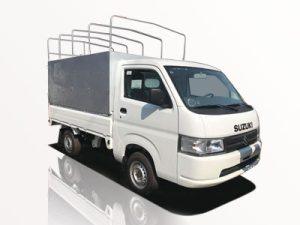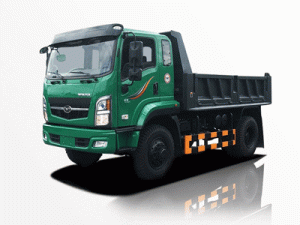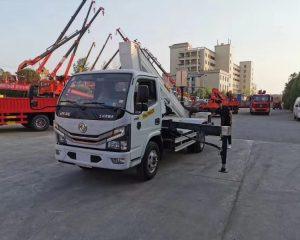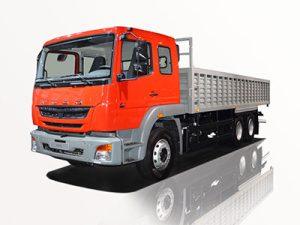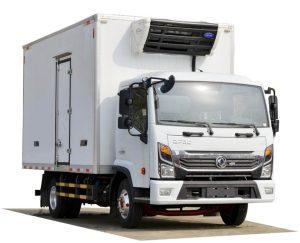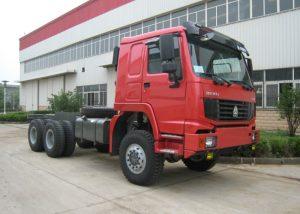Monday to Saturday - 8:00 -17:30
Understanding Light Commercial Vehicles: A Comprehensive Guide
Light commercial vehicles (LCVs) play a crucial role in various industries, serving as key assets for businesses that rely on transportation and logistics. This article aims to provide an in-depth look at light commercial vehicles, their benefits, types, and everything else you need to know when considering them for your commercial needs.
What Are Light Commercial Vehicles?
Light commercial vehicles are typically vehicles that weigh between 1.4 tons and 7.5 tons. They are designed primarily for the transport of goods and are widely used in various sectors, including construction, retail, and delivery services. Common examples include vans, small trucks, and utility vehicles.
Characteristics of Light Commercial Vehicles
- Weight: Generally, LCVs have a Gross Vehicle Weight Rating (GVWR) under 7.5 tons.
- Capacity: They offer a balance of payload and cargo space suitable for small businesses.
- Fuel Efficiency: LCVs are designed to be economical, providing better fuel efficiency than heavier trucks.
- Versatility: They can serve multiple purposes, such as transporting goods, equipment, or even converting into mobile offices.
Types of Light Commercial Vehicles
1. Vans
Vans are versatile LCVs commonly used for various purposes, such as delivery and transportation. Popular models include the Ford Transit, Mercedes Sprinter, and Volkswagen Crafter. They come in multiple sizes, from compact vans to large vans.
2. Pick-Up Trucks
Pick-up trucks combine passenger and cargo functionality. Brands like Toyota Tacoma and Ford Ranger are well-known in this category. They are ideal for transporting materials, equipment, and even for personal use.
3. Mini Buses
Mini buses are designed for passenger transport but can also serve as mobile service vehicles. They typically carry between 8 to 24 passengers and are popular in school transportation and shuttle services.
4. Box Trucks
Box trucks, also known as cube vans, have a large enclosed cargo area. They are commonly used for moving furniture, appliances, and other bulk items. Popular models include the Hino 338 and Isuzu NPR.
The Benefits of Using Light Commercial Vehicles
Cost-Effectiveness
One of the biggest advantages of LCVs is their affordability. They are usually less expensive than heavier commercial trucks, both in terms of purchase price and ongoing operational costs.
Fuel Efficiency
LCVs are designed for optimal fuel efficiency, which can significantly reduce operational costs for businesses that rely on transportation.
Flexibility
Their versatile nature allows businesses to use light commercial vehicles for multiple applications, from deliveries to mobile workshops.
Accessibility
LCVs are generally easier to operate and park than larger trucks. They can navigate urban areas more efficiently, making them ideal for last-mile deliveries.
Choosing the Right Light Commercial Vehicle for Your Business
Assess Your Needs
Before purchasing an LCV, identify your specific business needs, such as cargo capacity, passenger transport, and driving environment.
Consider Maintenance and Repair
Determine the maintenance requirements based on the model you choose, as upkeep costs can affect long-term profitability. Some manufacturers offer better warranty and service options.
Financing Options
Check for financing options that suit your budget. Many manufacturers and dealerships offer leasing and financing plans that can ease your initial investment burden.
Test Drive Before Buying
Always take a test drive to understand the vehicle’s handling, comfort, and features. This hands-on experience can help you make a well-informed decision.
Practical Examples of Light Commercial Vehicle Usage
Transportation and Logistics
Businesses in the transportation sector often rely on LCVs for efficient delivery. For example, courier companies use vans for parcel delivery due to their loading capacity and fuel efficiency.
Construction Industry
In construction, pick-up trucks and vans are commonly used to transport tools and materials. They provide ease of access to job sites while ensuring that necessary equipment is on hand.
Mobile Services
Many businesses are transforming LCVs into mobile service units. Coffee shops, food trucks, and mobile repair units utilize light commercial vehicles for its adaptability and ease of movement.
Future Trends in Light Commercial Vehicles
Electric Light Commercial Vehicles
As the automotive industry moves toward sustainability, electric LCVs are becoming increasingly popular. Brands like Ford and Mercedes-Benz have introduced electric models, reducing carbon footprints and operational costs.
Advanced Technologies
Modern LCVs are equipped with advanced technologies, including navigation systems and telematics, to improve efficiency and safety. Features such as lane assist and rear-view cameras enhance the driving experience.
Last-Mile Delivery Solutions
With the rise of e-commerce, the demand for efficient last-mile delivery LCVs is growing. Companies are focusing on smaller, agile vehicles that can navigate urban areas effectively.
Best Practices for Maintaining Light Commercial Vehicles
Regular Maintenance Checks
Schedule regular maintenance to check oil levels, tire pressure, and brakes. Keeping a maintenance log can help ensure that no crucial checks are overlooked.
Driver Training
Provide training for drivers on proper vehicle handling and safety procedures. This can minimize wear and tear, as well as ensure driver safety.
Fuel Management
Implementing fuel management systems can help monitor fuel consumption, leading to improved cost efficiency and reduced waste.
Cost Analysis: Light Commercial Vehicles vs. Traditional Trucks
| Criteria | Light Commercial Vehicles | Traditional Trucks |
|---|---|---|
| Purchase Price | Lower | Higher |
| Maintenance Cost | Lower | Higher |
| Fuel Efficiency | Higher | Lower |
| Parking/Accessibility | Easier | More Difficult |
| Payload Capacity | Moderate | Higher |
FAQ Section
1. What is the average lifespan of a light commercial vehicle?
The average lifespan of an LCV can range from 5 to 15 years, depending on usage, maintenance, and brand reliability.
2. Are light commercial vehicles suitable for heavy loads?
Light commercial vehicles are designed for moderate loads. For heavy loads, traditional trucks may be more appropriate.
3. How can I improve fuel efficiency in my light commercial vehicle?
Regular maintenance, mindful driving habits, and strategic route planning can significantly improve fuel efficiency.
4. What are the best brands for light commercial vehicles?
Some of the leading brands include Ford, Mercedes-Benz, Volkswagen, and Isuzu, known for their reliability and performance.
5. Can light commercial vehicles be converted for other uses?
Yes, many light commercial vehicles can be converted into mobile workshop units, food trucks, or even mini-offices depending on your business needs.
6. Do I need a special license to drive light commercial vehicles?
In most regions, a standard driver’s license is sufficient, but requirements may vary, so it’s essential to check local regulations.



